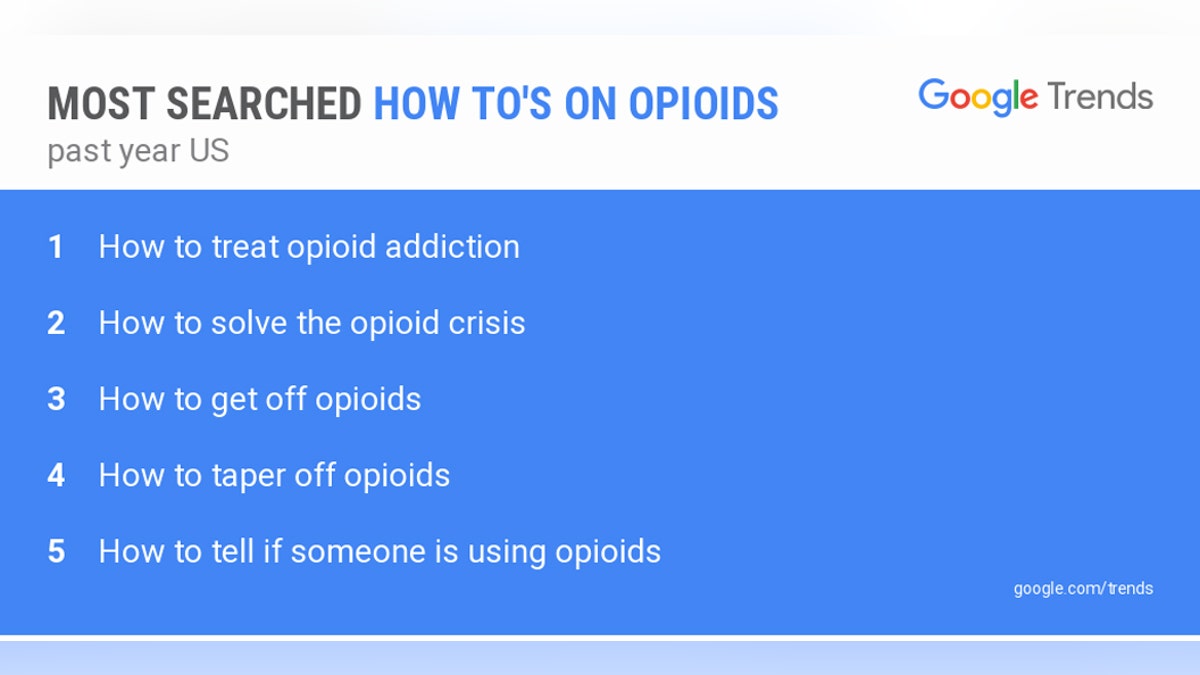Americans are more likely to die from opioids than a car crash
What is the White House doing to end the opioid crisis? Former Florida attorney general Pam Bondi weighs in.
Google is expanding its efforts to combat America's opioid crisis, an epidemic that takes the lives of more than 130 people every day, by announcing it is partnering with the federal and local governments and private healthcare companies.
In a blog post on Thursday, the tech giant said it would team up with the Drug Enforcement Administration, the Department of Health and Human Services, CVS, Walgreens and a number of state governments to bring drug disposal locations in Google Maps throughout the entire year.
"By bringing opioid disposal site information to Google Maps, Americans are only a search away from helping to address the opioid crisis," Ed Simcox, HHS Chief Technology Officer, said. "This type of consumer empowerment--providing easily accessible data--is the kind of innovation needed to improve healthcare."
GOOGLE RAMPS UP ITS EFFORTS TO TACKLE AMERICA'S OPIOID CRISIS
Users will be able to type in search queries like “drug drop off near me” or “medication disposal near me” and Google Maps will display permanent disposal locations at places such as a local pharmacy, hospital or government building. Initially, 3,500 locations in 7 states (Alabama, Arizona, Colorado, Iowa, Massachusetts, Michigan and Pennsylvania) will be available and then the initiative will grow over time.

(Credit: Google)
In January, Google said it saw search queries for “medication disposal near me” reach an all-time high, though it did not disclose the exact number.

(Credit: Google Trends)
In April 2018, Google first said it would bring drug disposal locations to Google Maps. In October, Google expanded the arrangement to work with Walgreens and develop a tool in Google Maps to help people get rid of medicines that are no longer needed by entering their zip code in an interactive map to find their nearest Take Back location.
Opioid addiction is possible after just five days of use, with 53 percent of drug abuse starting with drugs obtained from friends and family, which places an emphasis on "help[ing] people safely remove excess or unused opioids from their medicine cabinets," Dane Glasglow, VP of Product, Google Maps, wrote in the blog.
In October, President Donald Trump signed a bipartisan opioid bill that aims to curb the crisis, the deadliest epidemic of overdoses in the country's history. Nearly 48,000 people died in 2017 from overdoses involving opioids. Overall, U.S. drug overdose deaths have started to level off, but officials say it's too soon to declare victory.
WEARABLE DEVICE TAPS TECH TO BATTLE OPIOID ADDICTION
The legislation will add treatment options and get the U.S. Postal Service to screen overseas packages for a synthetic form of opioids called fentanyl that are being shipped mainly from China.
The Obama administration secured a commitment to expand treatment and Congress provided $1 billion in grants to states. Trump declared the opioid epidemic a national emergency and two major funding bills have passed under his watch.
Fox News' James Rogers contributed to this story.





















